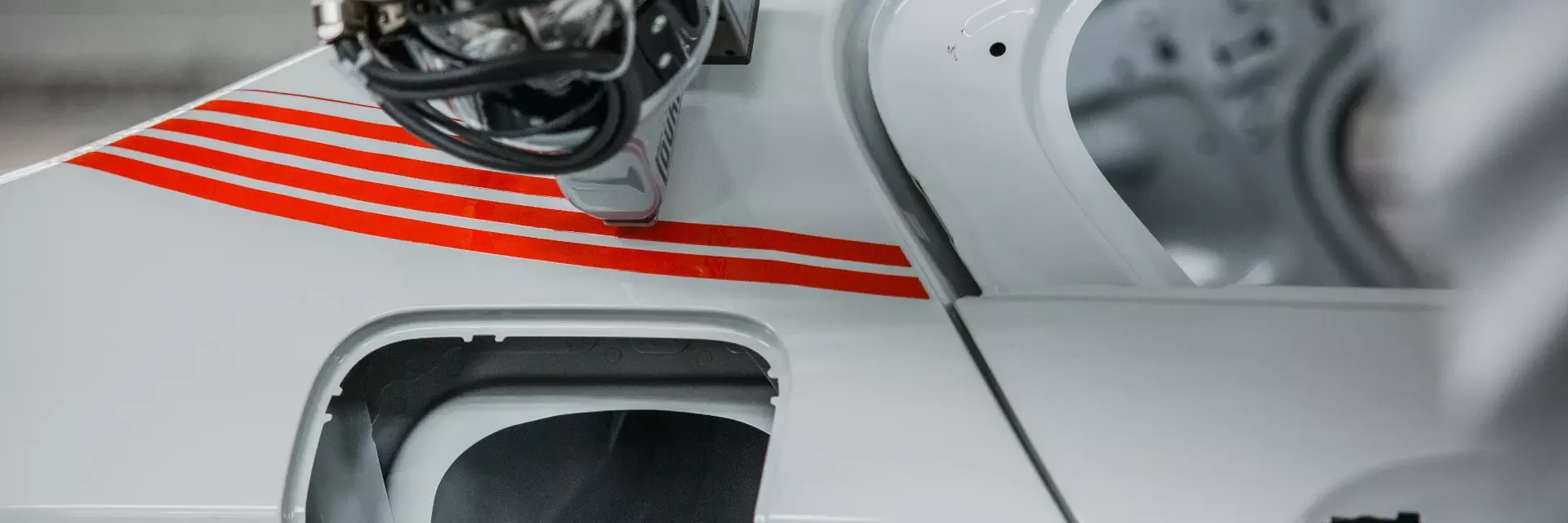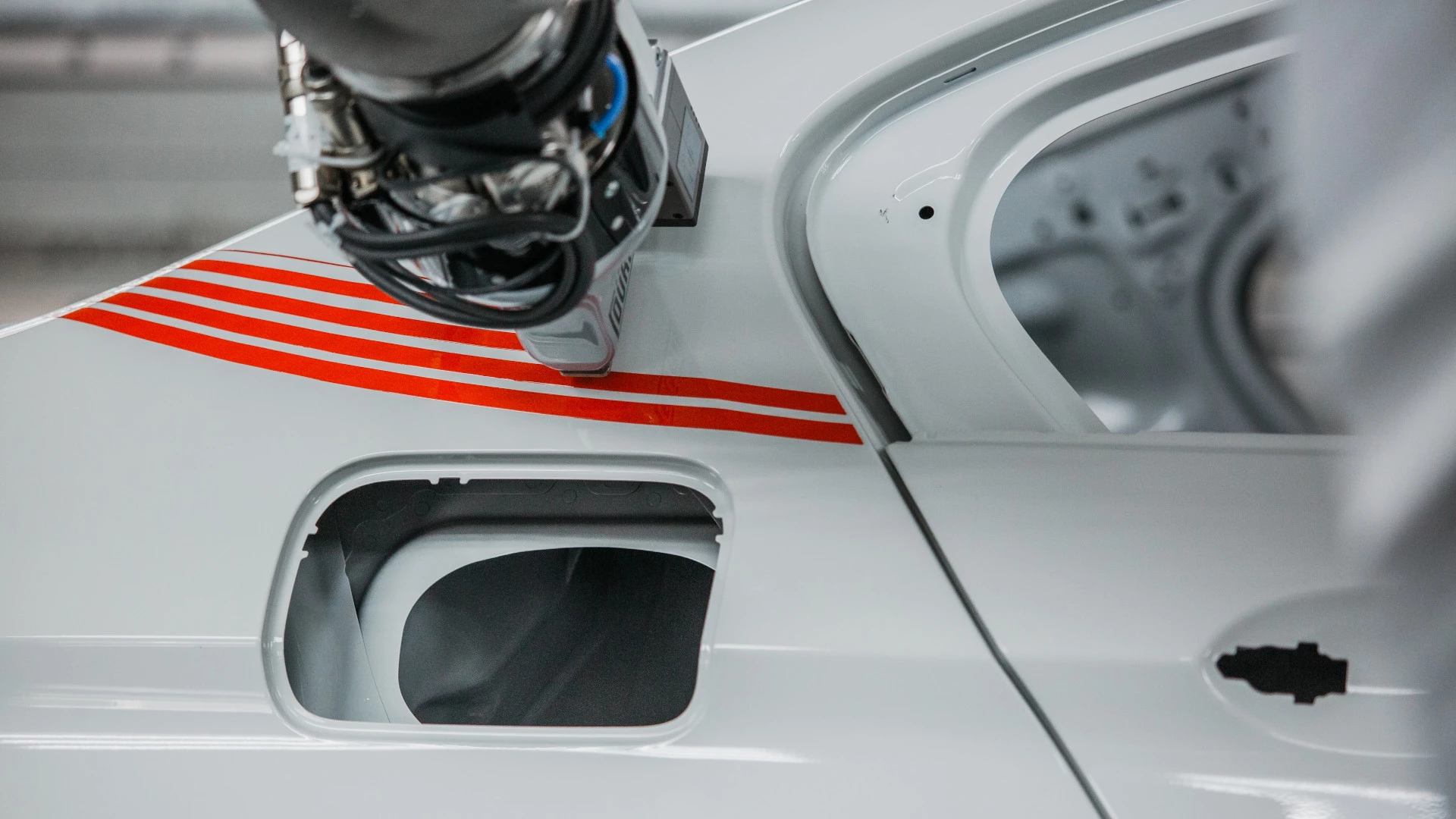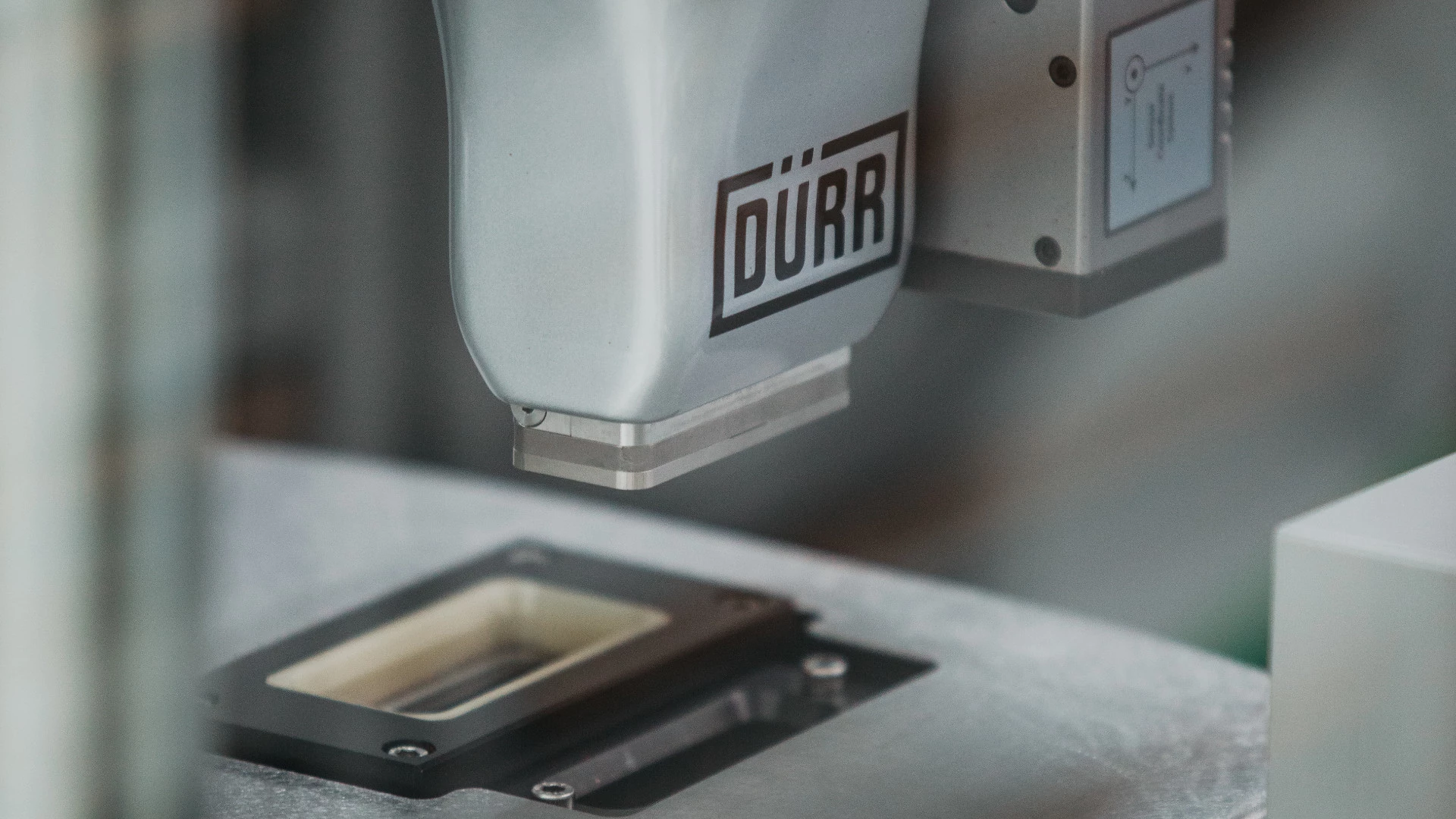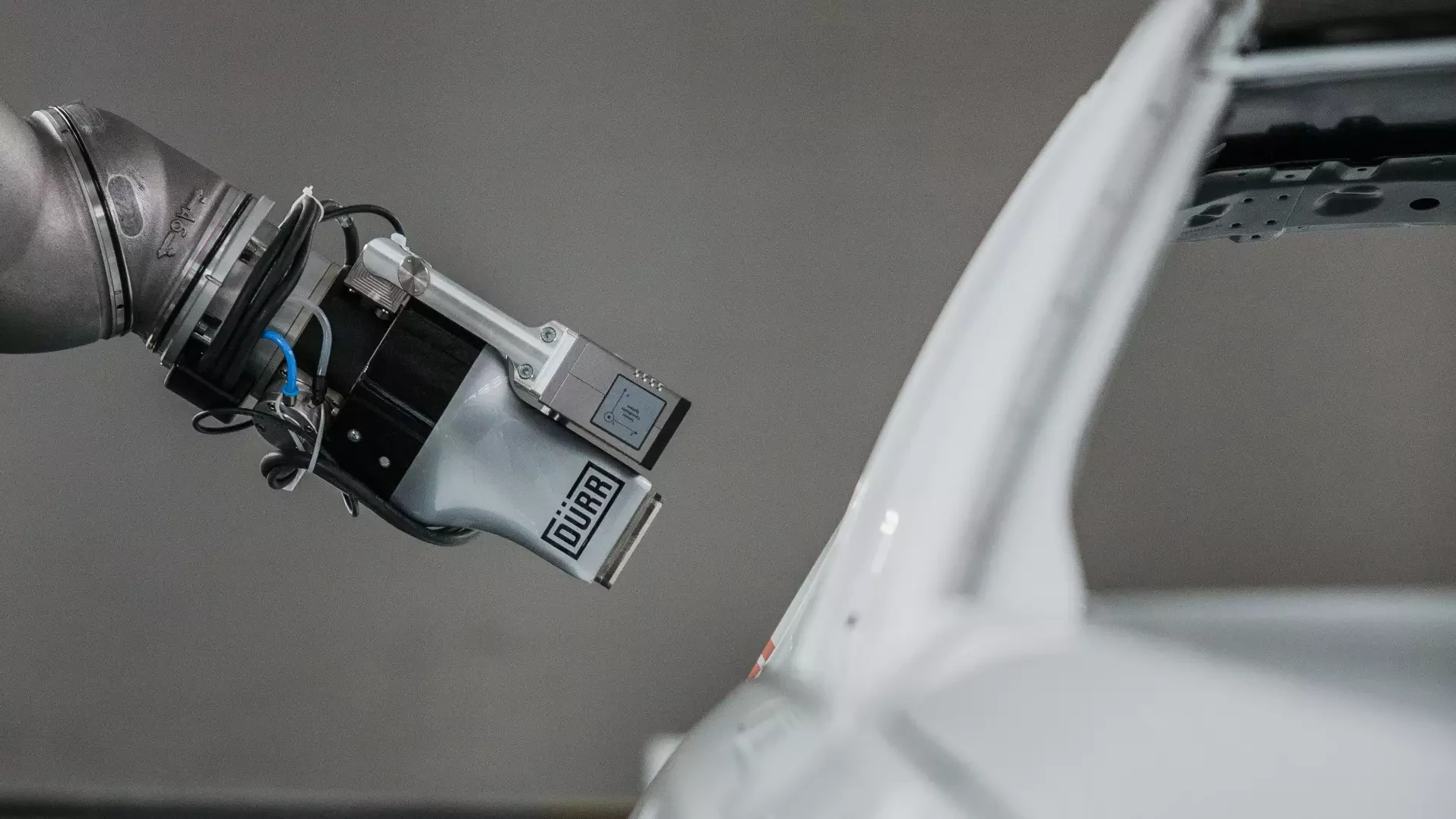Whether contrasting colors on roof surfaces or A and C pillars, stripe designs, or intricate elements like letterings, the design requirements for two-tone paint jobs in car manufacturing are ever-increasing. Also rising because of this are manufacturers’ expectations of paint shop systems. They must have the flexibility to apply contrasting paint jobs with different colors and paint types on diverse surfaces, including vertical ones, without needing the body design to be changed or hindering the manufacturing process while keeping manufacturing and environmental costs as low as possible.
For the challenging task of applying all paint types completely automatically in two-tone lines without any overspray, Dürr enhanced its EcoPaintJet system and came up with the EcoPaintJet Pro. This unique robot system with an overspray-free applicator and modified paint supply process includes all the components needed to meet these exacting requirements. In addition to an innovative cleaning process, it automatically checks the spray pattern, uses camera-based sensors for measuring the body as well as various software tools for robot control, generates the robot program, and adapts the painting program to the actual vehicle with accuracy down to tenths of a millimeter.
Innovative technology for more design variety
At the heart of the system is the EcoPaintJet Pro applicator, which, unlike a rotary atomizer, applies the color with the help of an intricate nozzle plate. Several dozen barely visible individual nozzles with a diameter of around one-tenth of a millimeter apply the color to the body in parallel streams from up to 25 millimeters. Since one hundred percent of the paint lands on the surface without any loss, two-tone paint jobs can be completed with more speed and less waste – even without masking.
Nozzles opening and closing independently in fractions of a second offer completely new design possibilities for carmakers. Based on the new application principle, design elements like decorative stripes or contrasting colors are applied to the body automatically. The EcoPaintJet Pro can paint large areas, apply patterns and directly transition between the two functions.
Fast color changes without any waste
From the beginning, Dürr designed the EcoPaintJet Pro to make color changes easy. Its design prevents paint accumulation which is crucial for fast switching between two paint shades with minimal losses.
This feature is also critical when working with 2C paints because they cure quickly. The fine nozzles can become clogged by even minimal residue left after rinsing. With the EcoPaintJet Cleaner, no waste is released into the booth environment because all cleaning and rinsing processes occur in a closed system. And no overspray means no need for an overspray separation system!
Fully automated individualization
The complex geometries of the body parts to be painted pose substantial challenges to the 3D measurement and programming of robot paths. The DXQ3D.onsite software helps operators configure the process parameters by automatically calculating the painting paths where the applicator hovers over the surface. An initial measurement registers and compensates for any inaccuracies in the conveyor technology or the body-in-white. A second sensor mounted on the robot measures the variation between the painted body and the reference model. The robot controller adapts the painting paths in real-time. The applicator’s speed and incline angle are controlled, so the color is always evenly applied without overspray. The development of the software tools is an ongoing process, with additions and improvements regularly incorporated.
Complete process layout flexibility
With EcoPaintJet Pro, car manufacturers can integrate overspray-free application not only into new plants, but also existing ones. Various processes that integrate at different points in the paint shop make this possible. For example, the contrast color can be applied to the base coat following intermediate drying or as a single-layer clear coat on the cured clear coat. Masking-free two-tone painting with EcoPaintJet Pro requires much less space and energy than a comparable, conventional line. Calculations show energy savings of up to 32 percent (based on the entire painting line), equating to a CO2 emissions reduction of up to 33 kg per car body.
Dürr’s new process offers substantial benefits when it comes to manufacturing costs and environmental compatibility, too. No overspray means no need for overspray separation, and the fact that the rest of the body no longer needs film masking eliminates large amounts of waste. Another benefit is a better utilization of paint shops. Dr. Lars Friedrich, President & CEO Application Technology Dürr Systems AG, is confident that “printing instead of spraying is the future of automotive painting.” “Our process involves no overspray and no masking, even for vertical surfaces. In terms of cost efficiency and sustainability, Dürr has taken another step in the right direction with the EcoPaintJet.” A car manufacturer is currently integrating the new process in its manufacturing facilities and expects it to be up and running in the second half of 2022.




